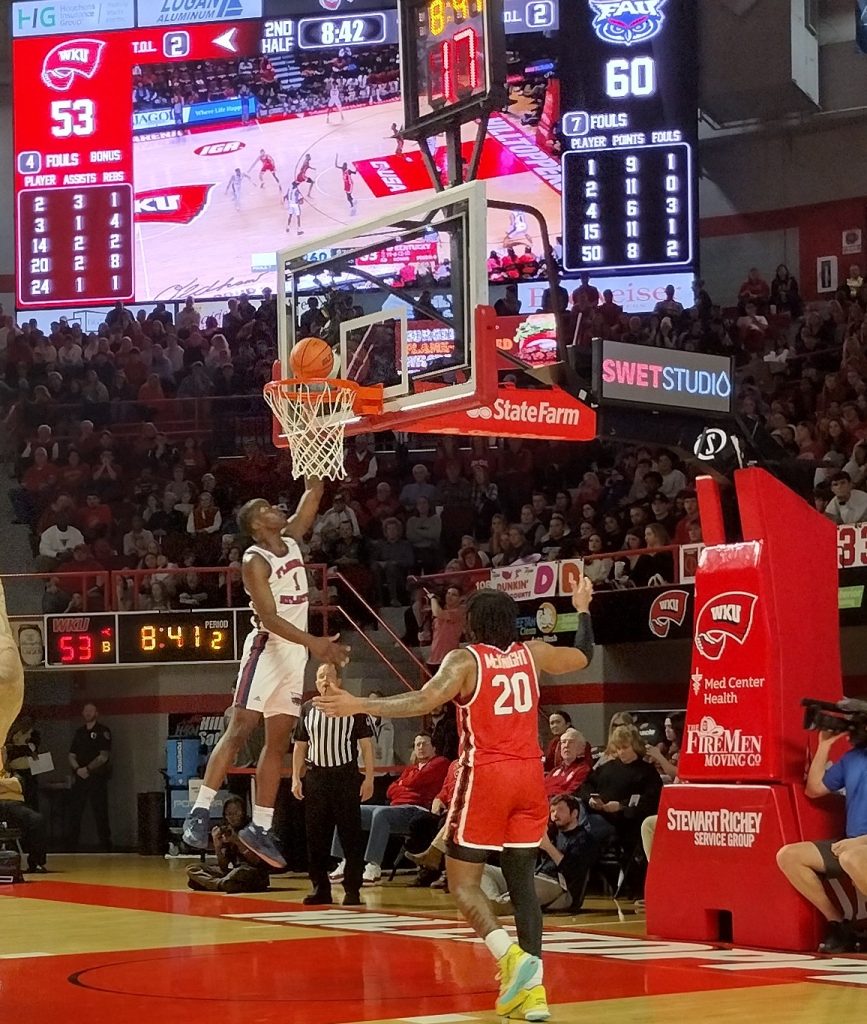
SWEPT WKU IN THREE GAMES
ON ITS WAY TO THE FINAL FOUR.
THE LEAGUE’s “ORIGINAL TEN” ARE ALL LONG GONE, IN THE REAR-VIEW OR HEADED ELSEWHERE
Take a bow, Conference USA.
A big one.
This is the conference’s finest moment, as unlikely as it is impressive, because the league’s future, like its immediate past, is all over the place.
Conference USA was founded after the dissolution of the Metro Conference and the Great Midwest Conference, in the mid-90s. The Metro was just that, an urban conference with basketball-centric fan bases, cities and locales such as the University of Cincinnati, Saint Louis University, the University of Alabama-Birmingham, and in the Commonwealth, the University of Louisville.
It was a maverick league with a trio of Jesuit schools in the Midwest — Saint Louis, Marquette University in Milwaukee and DePaul University, outside Chicago — along with outliers such South Florida, Tulane University, the University of North Carolina-Charlotte, and, for me, the University of Southern Mississippi, a former teachers’ college in Hattiesburg, an hour or so from my residence for 18 years, the Mississippi Gulf Coast.
The possibilities seemed endless.

WKU 76-62 ON JANUARY 17
AT E.A. DIDDLE ARENA …
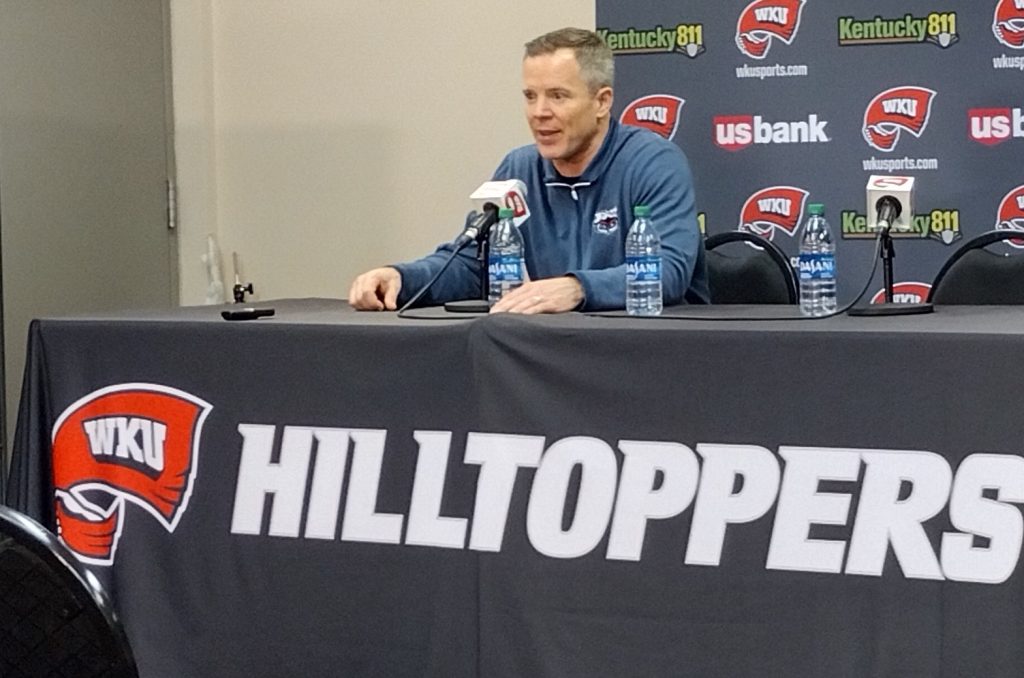
HIS COACHING PROFILE GROW IN SIGNIFICANT FASHION.
Southern Miss, which for decades had been an NCAA independent in Division I-A football, could finally get some balance on its schedule. Instead of playing seven or eight road games every season, taking the payday while taking on the likes of Auburn, Alabama, LSU, Florida State, etc.
Men’s basketball, and the late M.K. Kirk, the Golden Eagles’ coach from 1976 until their first season in Conference USA, the 1995-96 campaign, was more than content to go along for the ride.
Baseball? Oh yeah, longtime USM baseball coach Hill Denson was on board. The Golden Eagles played host to the first Conference USA Baseball Tournament, in Hattiesburg, where I spent four days and I’m not sure how many nights of chasing foul balls, misadventures and the incredible wake of mi compadre, my partner in petty crime — Charlie Bennett of the Times-Picayune in New Orleans — around the little Pine Belt college town that loved its sports.
It still does.

GUIDED SOUTHERN MISS TO THE NIT TITLE IN 1987.
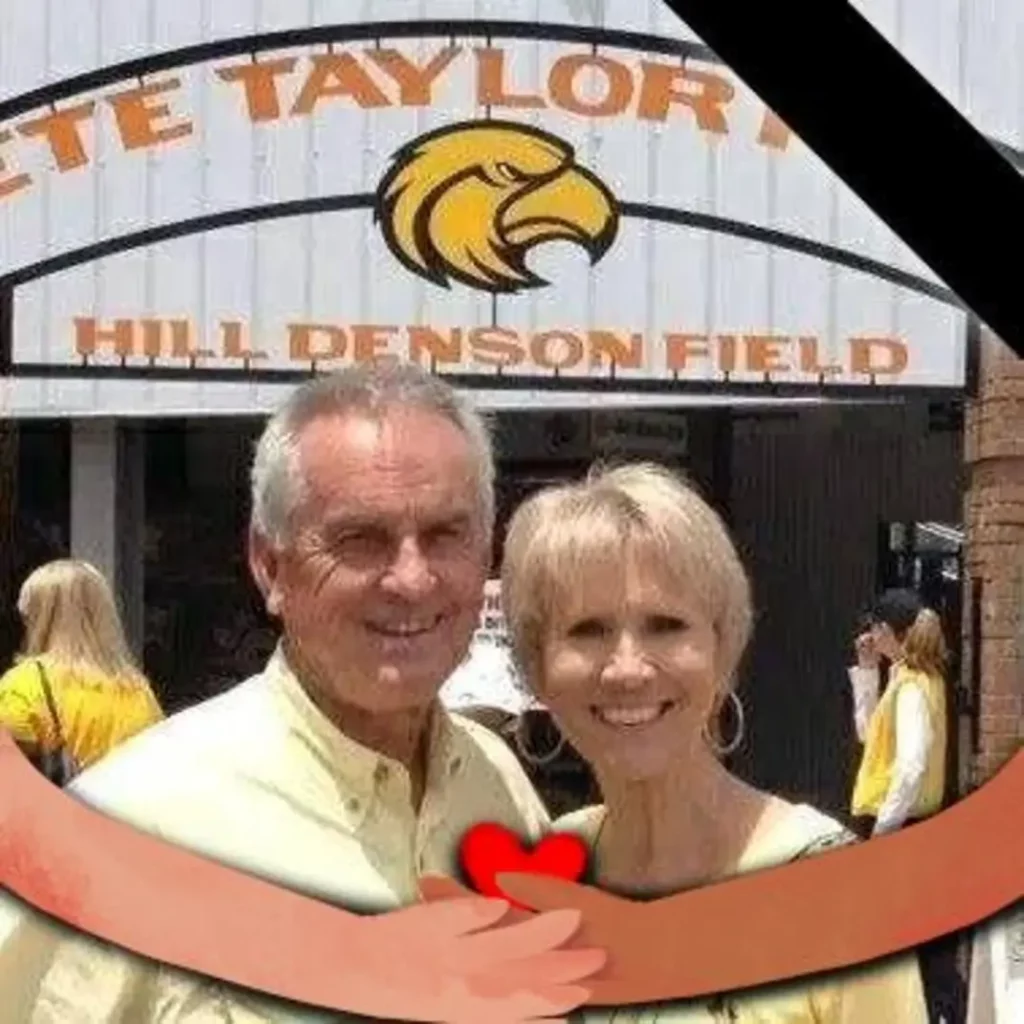
WAS THE USM BASEBALL COACH
WHEN THE SCHOOL WENT TO C-USA ..

COME EXPENSE REPORT TIME
THAN MI COMPADRE CHARLIE BENNETT.
Southern Miss could re-establish some old rivalries, in the case of former Metro Conference, with the likes of Florida State, Louisville, Cincinnati and Memphis in men’s and women’s basketball.
My sports editor on the Mississippi Gulf Coast sent me up to Memphis to cover an organizational/coming out meeting of Conference USA schools that year, and wouldn’t you know it, I ran into the University of Louisville’s Hall of Fame coach, Denny Crum, on the top floor of The Peabody.
He thought the league had real potential, and I agreed.
In the era of Conference Free Agency, however, which began with the departures of Texas A&M and Missouri for the Southeastern Conference in 2011, and continues to this very day.
And none of them have been more adversely affected, best I can tell, than Conference USA.
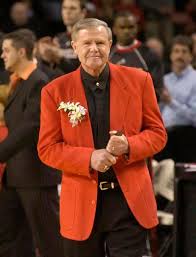
HAD REASON TO BE OPTIMISTIC ABOUT
CONFERENCE USA IN THE MID-90s.
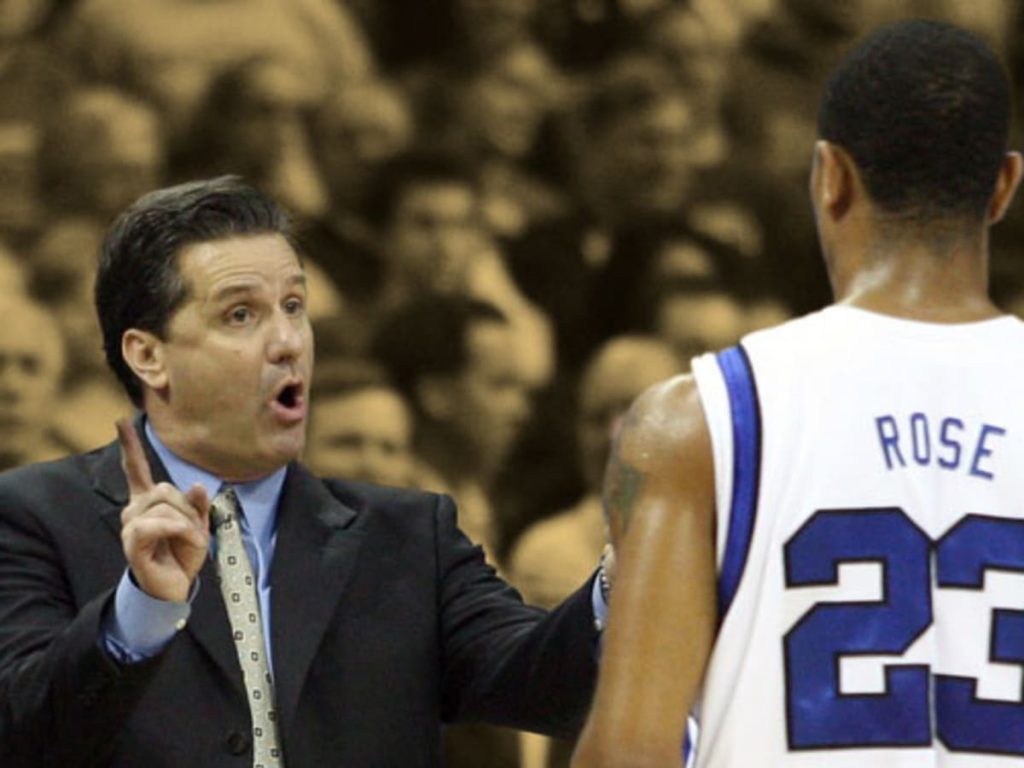
THE UNIVERSITY OF KENTUCKY
AFTER THE 2008-09 SEASON.
Expectations were high in these parts when former Western Kentucky University coach Rick Stansbury introduced his 2022-23 squad
“I don’t like this team, I LOVE this team,” Stansbury said last November at his preseason press conference at WKU’s E.A. Diddle Arena.
There were some interesting pieces, to be sure, to this puzzle, but the wheels quickly fell off the bandwagon and Stansbury was squeezed out after a dismal 17-16 season.
The Hilltoppers had a prolific point guard in Dayvion McKnight, a 7-foot-5 shot blocking machine in Hopkinsville’s Jamarion Sharp, four or five capable role players such as Luke Frampton, Jairus Hamilton, Emmanuel Akot and Khristian Lander. There were other players on the roster, like heady defender Jordan Rawls and Dontaie Allen, a transfer from the University of Kentucky, who would challenge for extensive playing time.
Of course, it never came together.
Stansbury’s extended absence — the veteran WKU coach missed nine games with unspecified medical concerns at midseason, coinciding with the start of Conference USA play — left the Hilltoppers forever in a scrambling mode.
They won three consecutive games under interim coach Phil Cunningham, then the Hilltoppers’ associate head coach and formerly the head coach at Troy University in Alabama. But that sense of optimism disappeared almost overnight, and Western started getting beat, night after night, by the likes of Florida Atlantic, Charlotte, North Texas and UAB.

IN TWO GAMES ON ITS WAY
TO WINNING THE NIT IN LAS VEGAS.
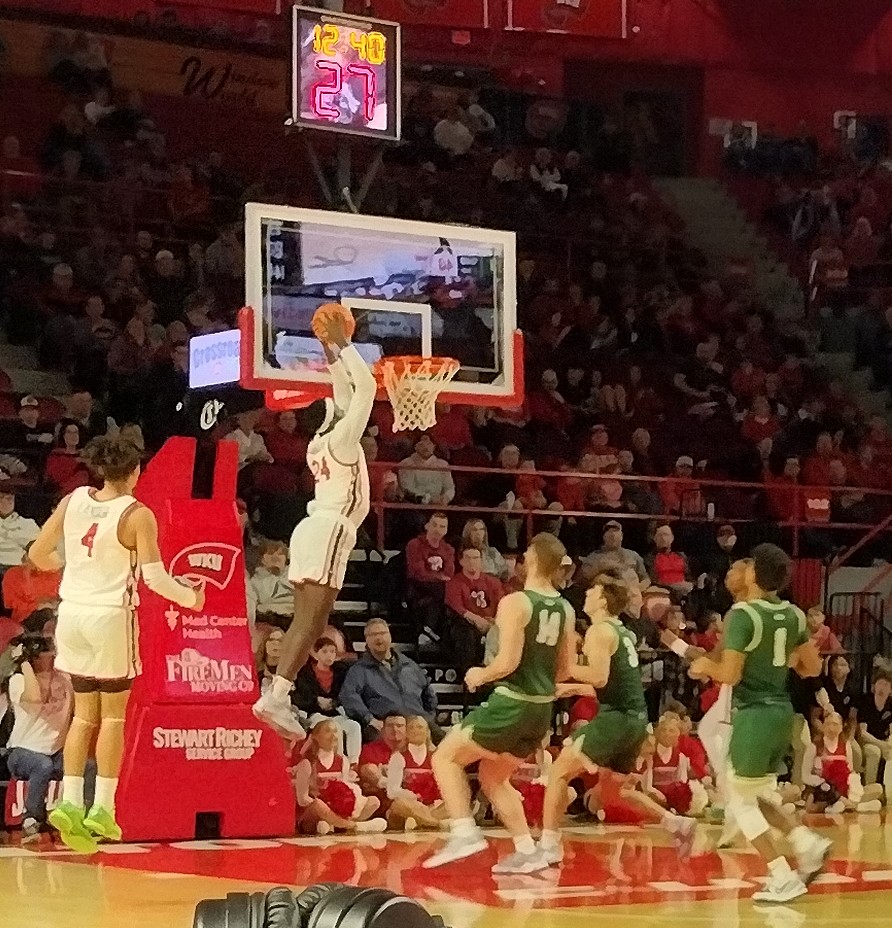
FINISHED 8-12 AGAINST
CONFERENCE USA THIS SEASON.
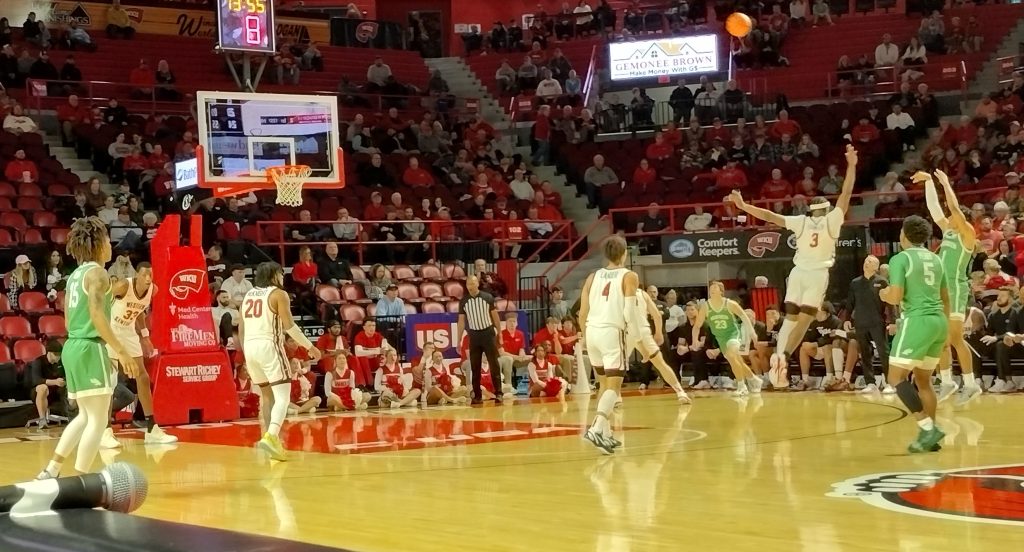
AND TOOK THE FIGHT TO THE HILLTOPPERS.
Conference USA opponents (at least for the time being), all of them.
Western Kentucky has brought on a promising new head coach, former Texas A&M-Corpus Christi coach Steve Lutz, to campus in the last couple weeks, and, whatwith the nature of college basketball these days — the NCAA Transfer Portal, NIL (Name/Image/Likeness) and virtual student-athlete free agency — there’s fixin’ to be a lot more of them.
As in membership.
As it is, Conference USA is already all over the place, stretching from Norfolk, Virginia (Old Dominion University) to El Paso, Texas (UTEP, formerly Texas Western, which won the famous 1966 NCAA championship against Rupp’s Runts from the University of Kentucky), but that’s a mirage, too.
And, geographically speaking, an improvement from the 2021-22 school year, when Marshall University was still in Conference USA before bolting for the Sun Belt Conference just 10 or 11 months ago. It’s a long way — a L-O-N-G way — from Huntington, West Virginia to El Paso, in the Mountain Time Zone, on the U.S.-Mexico border.
But this should be Conference USA’s finest moment, and, at least on the surface, it certainly is.
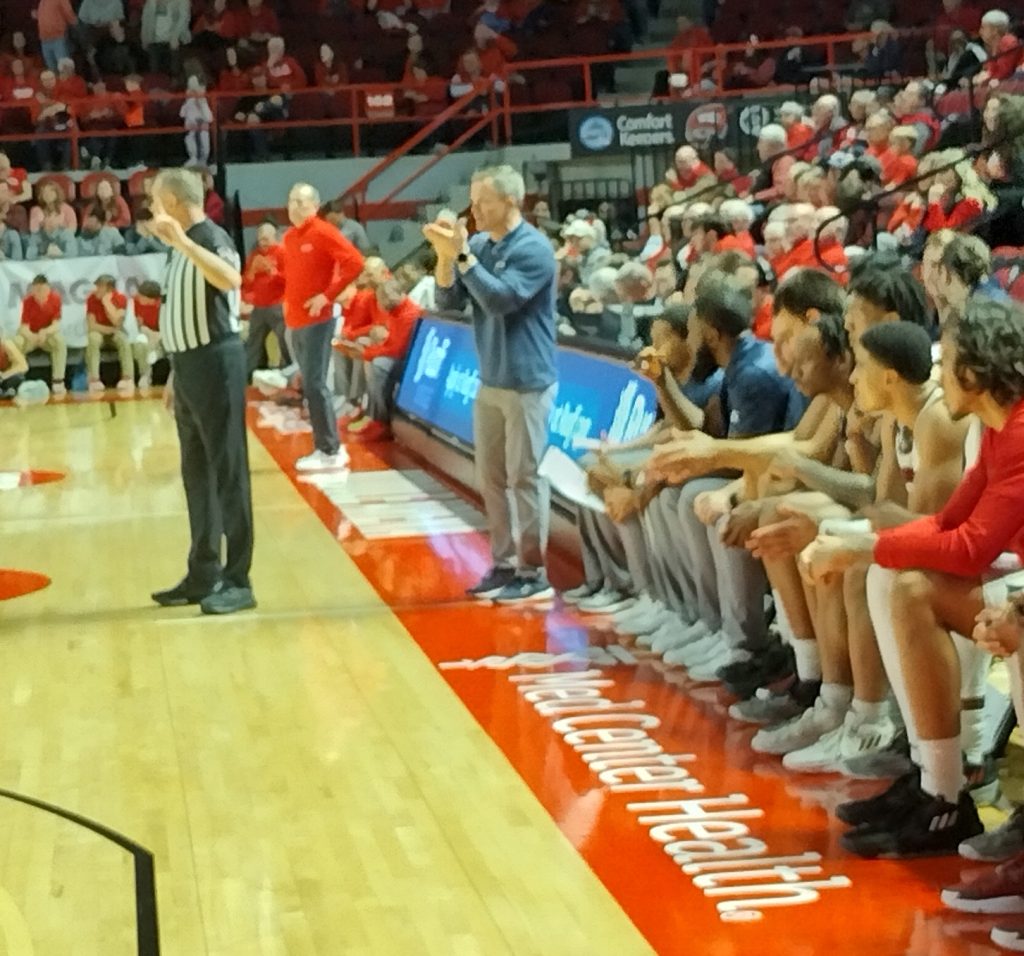

TAKES A 35-3 RECORD INTO THE FINAL FOUR.
Florida Atlantic, coached by the personable, 46-year-old Dusty May, is in the Final Four this weekend, as a No. 9 seed from the NCAA’s East Regional.
It’s been a fortuitious path, given No. 16 seed’s Fairleigh Dickinson University taking down No. 1-seeded Kansas in first-round play, but an impressive one just the same. The Owls have knocked off the University of Memphis, Fairleigh Dickson, University of Tennessee from the mighty SEC and then finally Kansas State, 79-76, in an Elite Eight game at the famed Madison Square Garden in New York City.
It’s not Conference USA’s first time to crash the Final Four, but the others were a long, long time ago.
Marquette, coached by Tom Crean and starring the likes of former NBA superstar Dwyane Wade, ex-Mississipi State center Robert Jackson and erstwhile NBA journeyman Travis Diener, made it to the 2003 Final Four, in New Orleans. I happened to cover that one, making the short drive over from Biloxi-Gulfport, and the Golden Eagles were no match for eventual national champion Kansas, losing 94-61 in the massive Louisiana Superdome.
Conference USA was back, seemingly with a vengeance, with John Calipari’s University of Memphis Tigers five years later.
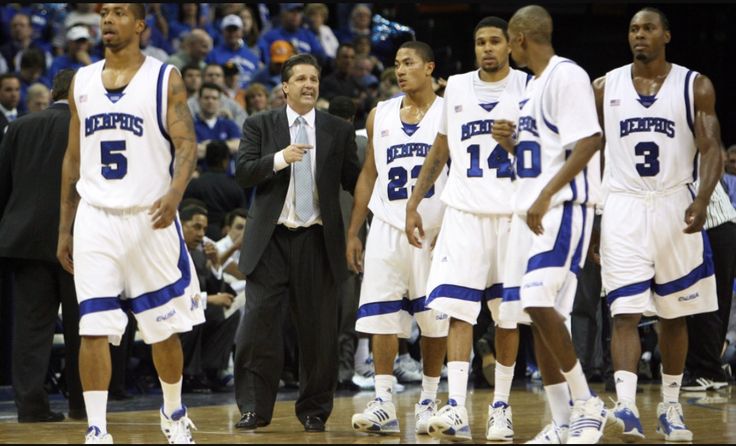
WERE THE TOAST OF CONFERENCE USA IN 2008 …
Derrick Rose and the University of Memphis was a veritable juggernaut over the course of the 2007-08 season. They went 33-1 in the regular season, dominating everyone in sight, except for a 66-62 loss to intrastate rival Tennessee at the Fed Ex Forum in Memphis. They took a 38-1 record into the championship game, and, well, choked late at the free-throw line before losing 75-67, in overtime, to the University of Kansas.
Since then, it’s been a mixed bag for Conference USA, in pretty much all sports.
Mixed being the operative word.
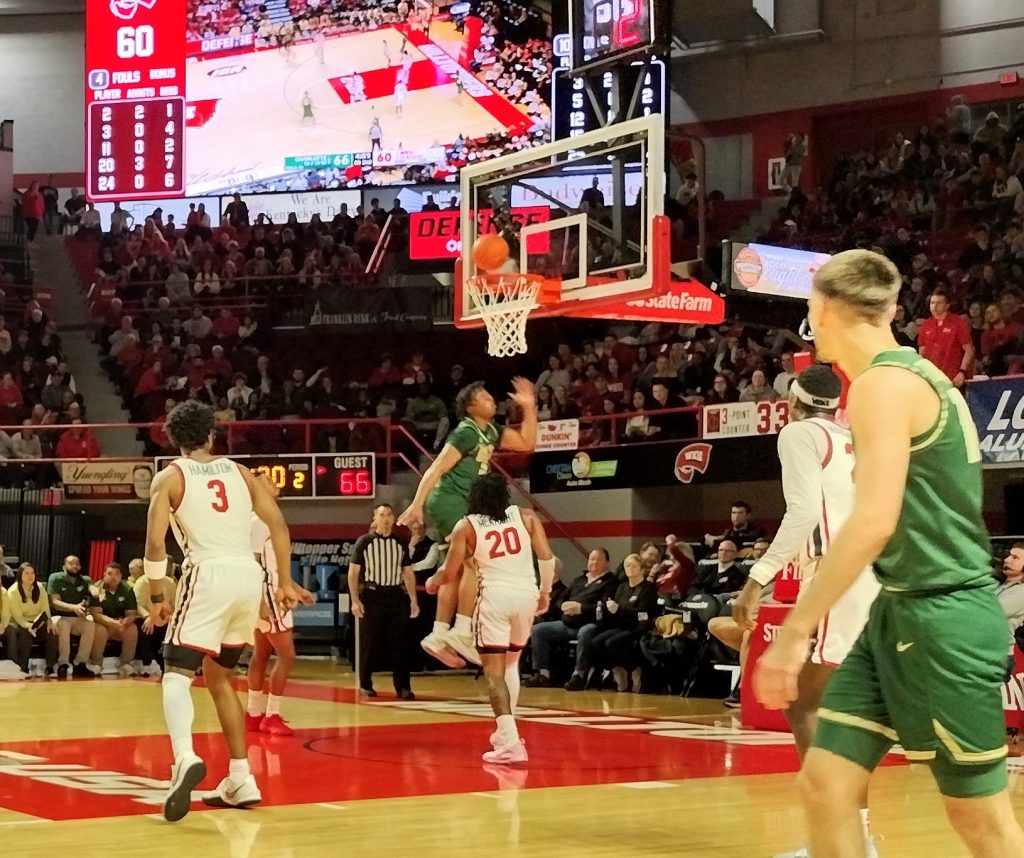
FROM WKU BY A COMBINED 8 POINTS
ON ITS WAY TO WINNING THE CBI TOURNAMENT.
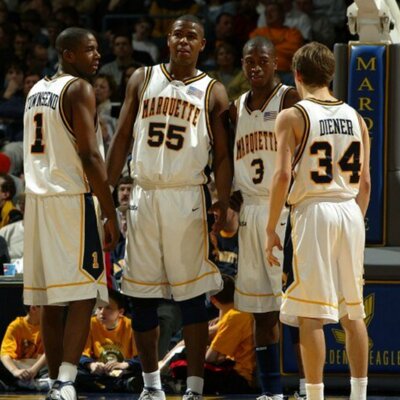
AND FUTURE NBA STAR DWYANE WADE
LED MARQUETTE TO THE FINAL FOUR IN 2003.
Along with Florida Atlantic’s historic run to the Final Four — the Owls had never won an NCAA Tournament game before the 2022-23 season — Conference USA has enjoyed unprecedented success on the hardwood.
Charlotte knocked off Eastern Kentucky in the CBI championship game, and the NIT title tilt pitted TWO Conference USA teams, North Texas and UAB. It’s a distinct possibility that Florida Atlantic could make it three-for-three — the Owls play another perpetual underdog San Diego State in Saturday’s semifinals — over the weekend in Houston.
Heady stuff, until you realize all these schools are in a four-point stance on their way outta Conference USA.
Florida Atlantic, UTSA and Charlotte are on their way to the American Athletic Conference, which includes the like of former Conference USA schools such as the University of Houston, a national basketball power of late, along with tradition-rich Cincinnati, East Carolina and Tulane.
Old Dominion University is on its way to the Sun Belt, following the lead of former C-USA schools such as Southern Miss and Marshall. Western Kentucky spent about three decades in the Sun Belt Conference, before bolting to Conference USA for the 2014-15 academic year.
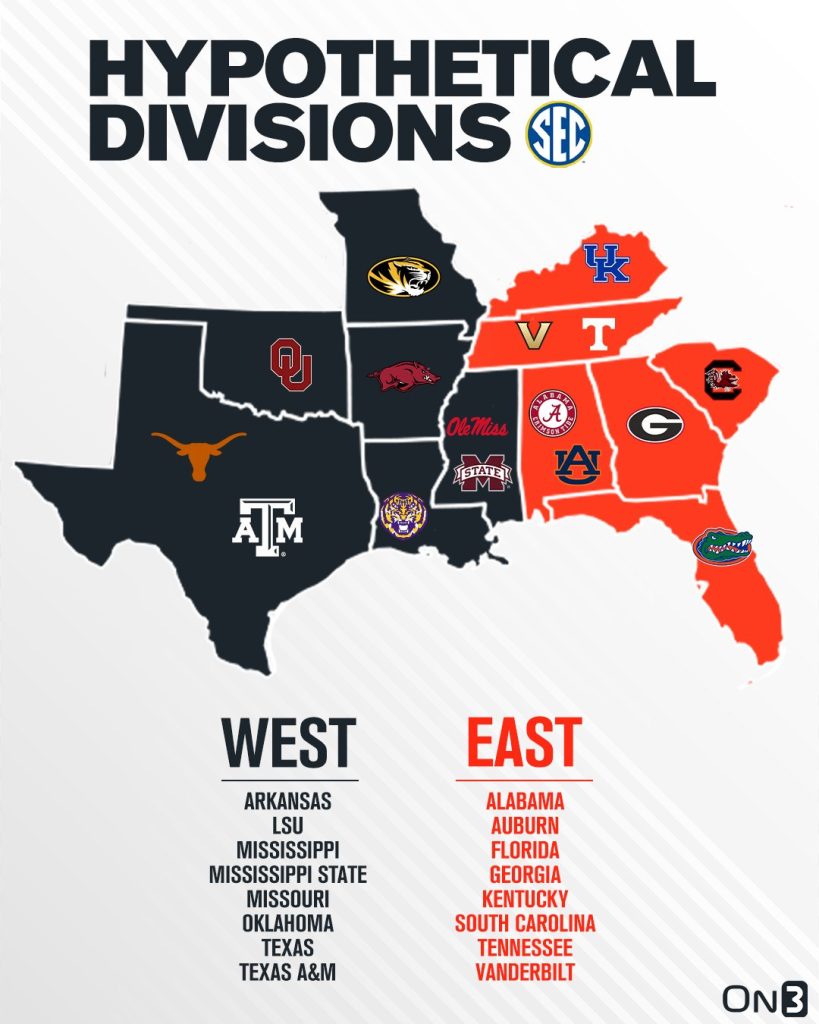
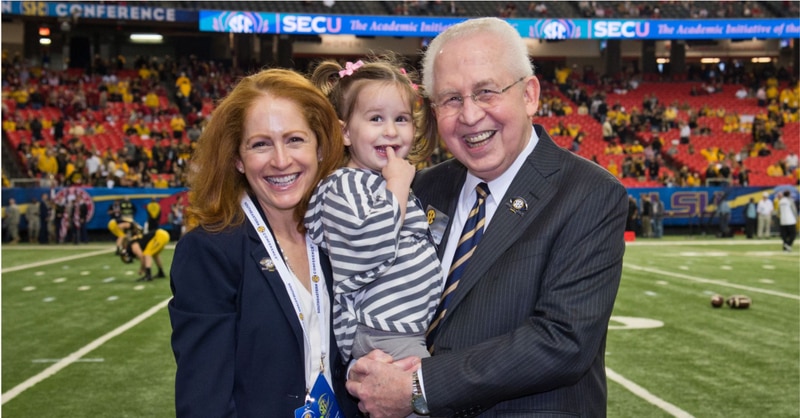
OF CONFERENCE USA BEFORE MOVING
TO THE SEC IN 2002. SLIVE DIED IN 2018.
Over the years, more major universities have pulled into, and eventually out of, Conference USA, than the Interstate 65 exit from the Nashville International Airport.
Stability is critical in college sports leagues, and for the most part, the SEC and the Big Ten have enjoyed the lion’s share of it.
The Atlantic Coast Conference is a huge league that spans from Syracuse, New York, and metro Boston to the University of Miami, and the ACC has had national champions in Florida State football, Clemson football, the University of Virginia men’s basketball, and, of course, Duke, Duke, Dick Vitale’s beloved Duke University.
Pretty much, though, it’s the SEC and the Big Ten and everyone else.
And Conference USA is about to undergo MASSIVE membership changes, with Florida Atlantic, Charlotte and North Texas on their way to greener pastures.
Literally.
On its way to Conference USA, where Western Kentucky and its “100 Miles of Hate” rival, Middle Tennessee State University, 10-year C-USA school Louisiana Tech and newbie Jacksonville State (Alabama) are the following:

OF PRESIDENT RONALD REAGAN,
FOUNDED LIBERTY UNIVERSITY IN 1971 …

THINGS WENT A LITTLE SIDEWAYS
WITH JERRY FALWELL, JR. (LEFT)
**-Liberty University, the private Baptist university founded by the late Jerry Falwell in Lynchburg, Virginia;
**-Sam Houston State, in Huntsville, Texas, with a top-flight FCS football program and not much else;
**-New Mexico State, which went to the Final Four in 1970, the year before Western Kentucky followed suit, before languishing in decades of obscurity in leagues such as the Missouri Valley Conference, the Big West, the Sun Belt and the Western Athletic Conference.
(That’s a mouthful, Hoss.)
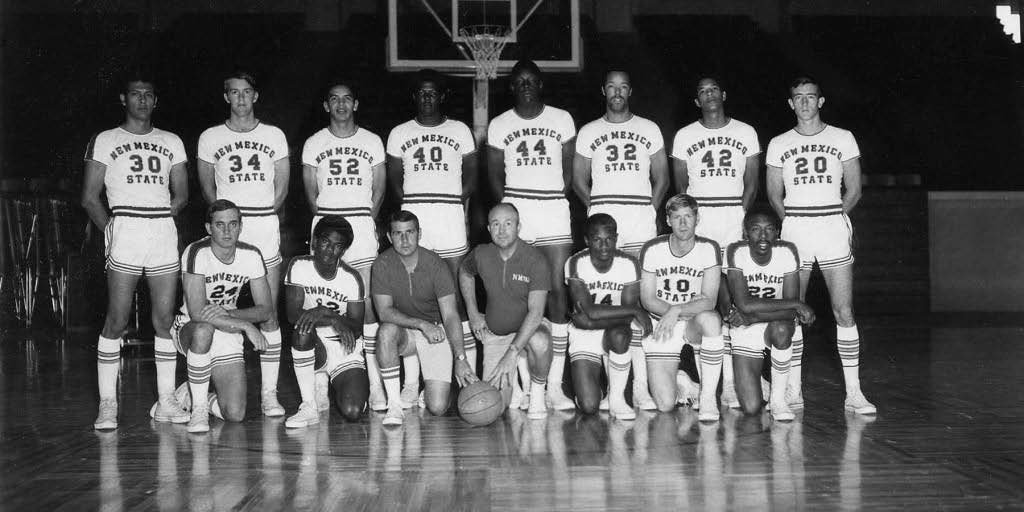
REACHED THE FINAL FOUR IN 1970 …
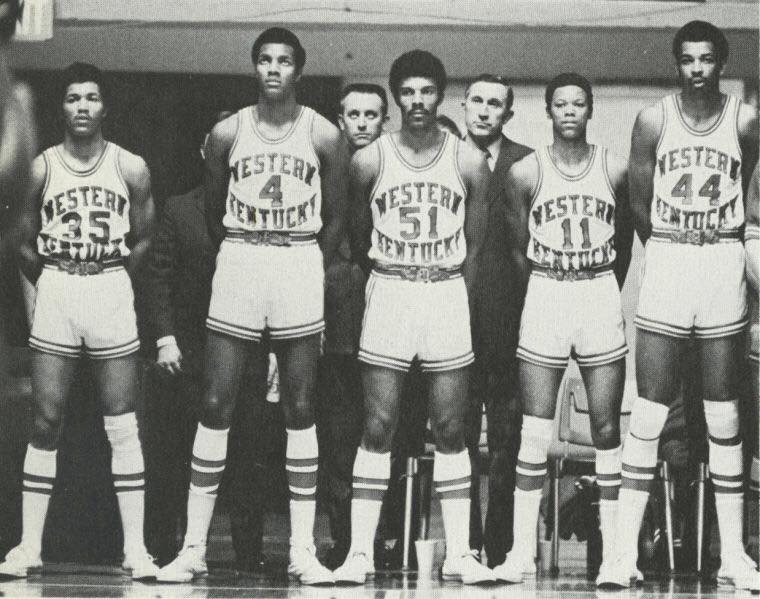
WKU SQUAD FOLLOWED SUIT IN 1971.
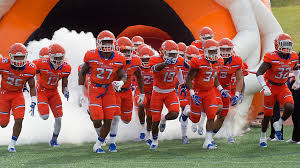
IS ON ITS WAY TO CONFERENCE USA.
We don’t wanna overlook Kennesaw State University, a metro Atlanta school that is on its way to Conference USA NEXT SEASON.
I don’t know about the fine folks in Murfreesboro, Tennessee, and MTSU think about such a lineup, and Western Kentucky president Tim Caboni and his longtime athletic director, Todd Stewart, have every right to brag about the HIlltoppers’ success in Conference USA over the last decade.
So color me underwhelmed, at least as far as the immediate future is concerned.
It’s just so entirely nondescript, this edition of Conference USA, while the present-day Sun Belt seems to make sense, at least geographically speaking.
Plus, the Sun Belt is broken into divisions, easing administrative concerns for travel in non-revenue sports, and the northern tier includes the likes of Marshall, James Madison University and, next year, Old Dominion. There will be two schools each from the states of Texas, Louisiana, Alabama and Georgia, along with recent C-USA refugee Southern Miss.
So embrace the moment, Conference USA.
Western Kentucky has more C-USA championships to pursue, over the next couple months, in baseball, in softball, and track and field and golf.
Austin Reed is the latest WKU quarterback with NFL potential, following in the footsteps of the New England Patriots’ Bailey Zappe and the New York Jets’ Mike White.
Steve Lutz, the new WKU men’s basketball coach, is a sharp guy who understands the Hilltoppers’ tradition. Greg Collins has a solid WKU women’s basketball squad, and Travis Hudson has a top-flight women’s volleyball team.
Success in athletics is a way of life, at Western Kentucky University and, in the high school ranks, across South Central Kentucky. There’s just some serious limitations, any way you slice it, getting that done in Conference USA.
Stay tuned.
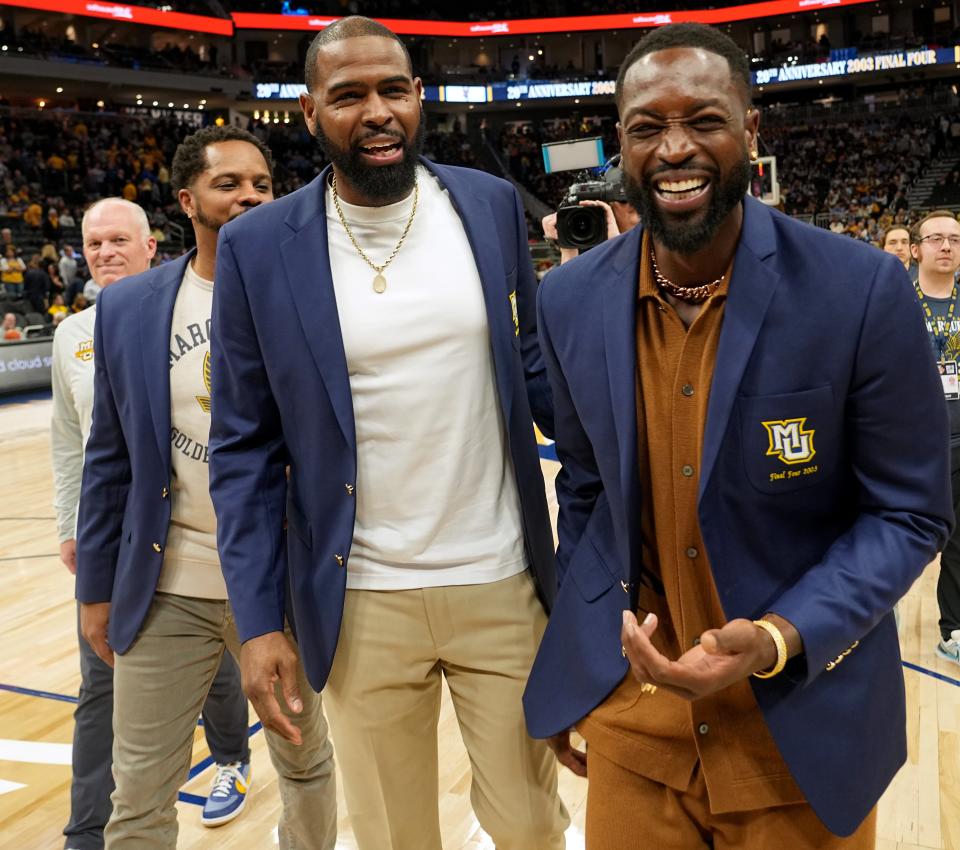
AND MARQUETTE TEAMMATE ROBERT JACKSON.
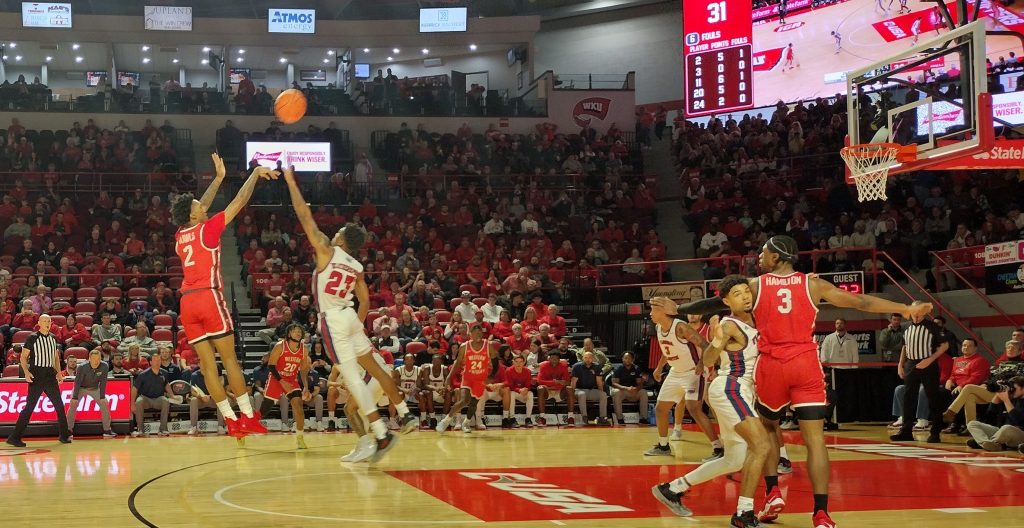
TO THE AMERICAN ATHLETIC CONFERENCE.

WITH HUNKERIN’ DOWN
AT THE HACIENDA FOR THE FINAL FOUR.
